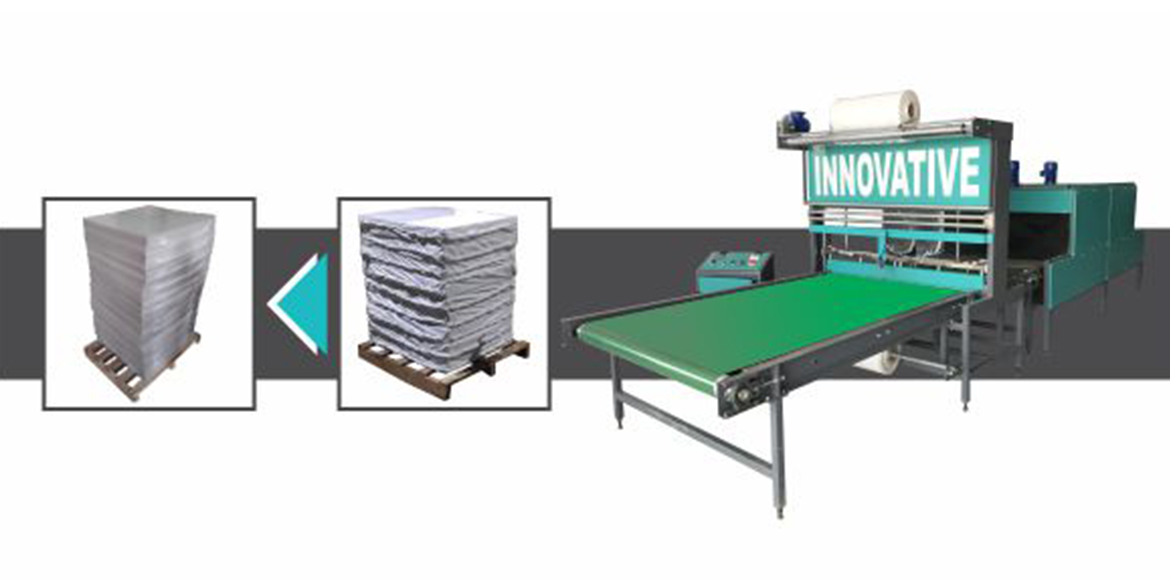Unwrapping Sustainability: How Shrink Wrap is Leading the Circular Economy Revolution

In a world grappling with plastic waste, shrink wrap, often seen as a culprit, is undergoing a transformative journey. This seemingly simple packaging solution is becoming a force for good, leading the charge towards a circular economy that minimizes waste and maximizes resource utilization.
The traditional image of shrink wrap often conjures up bulky, single-use plastic films. However, a paradigm shift is underway, driven by a growing awareness of environmental challenges and advancements in material science and manufacturing. Shrink Wrapping Machines Manufacturers are stepping up to the challenge, developing innovative technologies and sustainable practices that are reshaping the industry.
One key innovation is the Pallet Stretch Wrapper Machine. These machines, designed for securing and protecting palletized goods, are increasingly using thinner, more efficient stretch films made from recycled or biodegradable materials. This change significantly reduces the environmental impact of the packaging itself, while simultaneously offering excellent protection against damage and moisture. The commitment of Pallet Stretch Wrapper Machine manufacturers to sustainable practices is transforming how we view shrink wrap and its potential for environmental responsibility.
But sustainable shrink wrap extends beyond palletized goods. The Jumbo Bag Packing Machine, used for packaging large quantities of materials, is also incorporating sustainable practices. These machines are now capable of using bio-based, biodegradable films that are both strong and environmentally friendly. By utilizing these advanced materials and machines, the Jumbo Bag Packing Machine is contributing to a circular economy that minimizes waste and maximizes resource efficiency.
The benefits of sustainable shrink wrap extend beyond the materials used. Shrink Wrapping Machines Manufacturers are focusing on developing machines that are more energy-efficient, require less maintenance, and have longer lifespans. These advancements ensure that the production process itself is more sustainable, reducing the overall environmental footprint of shrink wrap packaging.
The shift towards sustainable shrink wrap also involves responsible end-of-life management. Companies are promoting the use of shrink wrap materials that are readily recyclable or compostable. This ensures that even after its initial use, the material can be reintegrated into the manufacturing cycle, minimizing waste and maximizing resource efficiency. Several companies are even developing innovative recycling programs specifically for shrink wrap, creating a closed-loop system that recovers valuable materials and minimizes landfill waste.
Here’s how shrink wrap can contribute to a circular economy:
- Reduced Waste Generation: Biodegradable and compostable shrink wrap materials decompose naturally, minimizing landfill waste and reducing the reliance on fossil fuels. This minimizes the amount of plastic ending up in our oceans and landfills, contributing to a cleaner, healthier planet.
- Resource Conservation: Using recycled materials in shrink wrap reduces the need for virgin resources and lowers the environmental footprint of production. By incorporating recycled plastics and promoting closed-loop recycling systems, we can reduce the pressure on raw material extraction, conserving valuable resources for future generations.
- Enhanced Recycling: The development of shrink wrap materials compatible with existing recycling infrastructure encourages proper waste management and allows for valuable materials to be recovered and repurposed. This helps close the loop on waste, ensuring that materials are utilized to their fullest potential, and minimizing the need for new resources.
- Closed-Loop Systems: Companies actively participating in collection and recycling programs for shrink wrap create a closed-loop system, minimizing waste and maximizing resource efficiency. This signifies a commitment to sustainable practices, demonstrating the responsibility of manufacturers in ensuring the responsible end-of-life management of their products.
The Future of Shrink Wrap: A Vision of Circularity
The shift towards sustainable shrink wrap is already gaining momentum. Consumer demand for eco-friendly products is pushing companies to adopt sustainable practices, while regulations on packaging waste are driving further innovation. This trend is expected to continue, with Shrink Wrapping Machines Manufacturers playing a pivotal role in developing innovative, sustainable solutions.
Shrink wrapping for a circular economy is more than just a trend; it’s a fundamental shift in the way we think about packaging and its impact on the environment. By embracing innovative materials, efficient technologies, and responsible end-of-life management, shrink wrap can become a crucial component of a circular economy, minimizing waste and promoting environmental conservation.
Companies like Innovative WrapTech Pvt. Ltd. are at the forefront of this revolution, offering a wide range of shrink wrap solutions, from Pallet Stretch Wrapper Machines to Jumbo Bag Packing Machines that incorporate sustainable practices and eco-friendly materials. Their commitment to innovation and sustainability paves the way for a future where packaging doesn’t just protect products but also protects our planet.